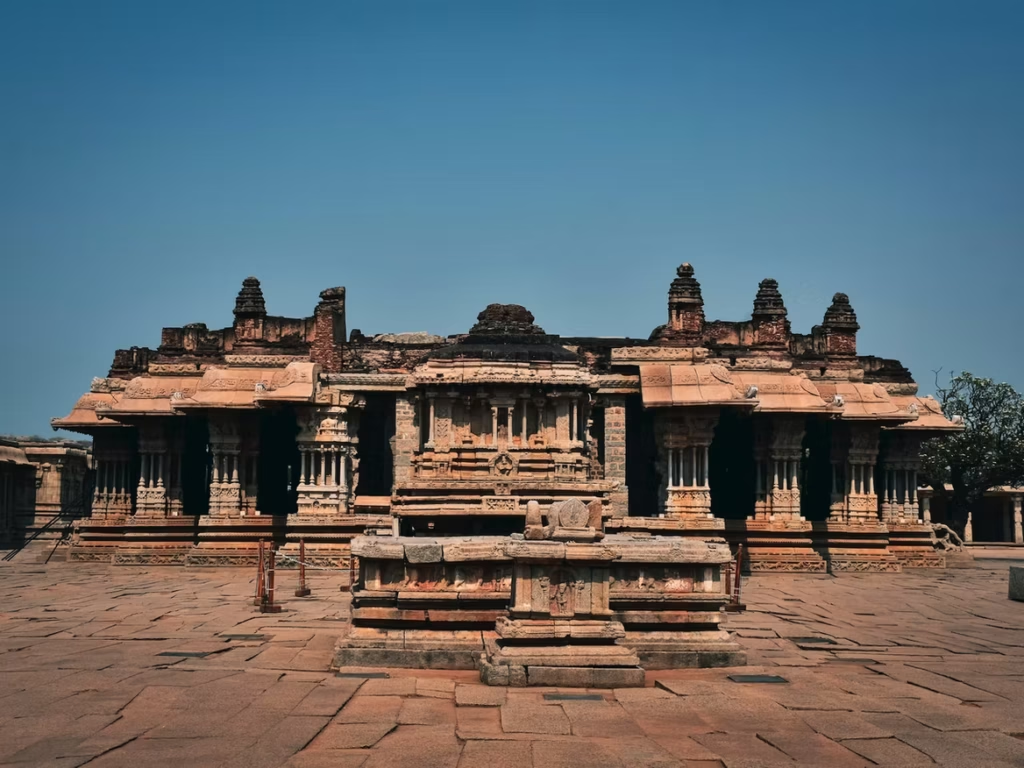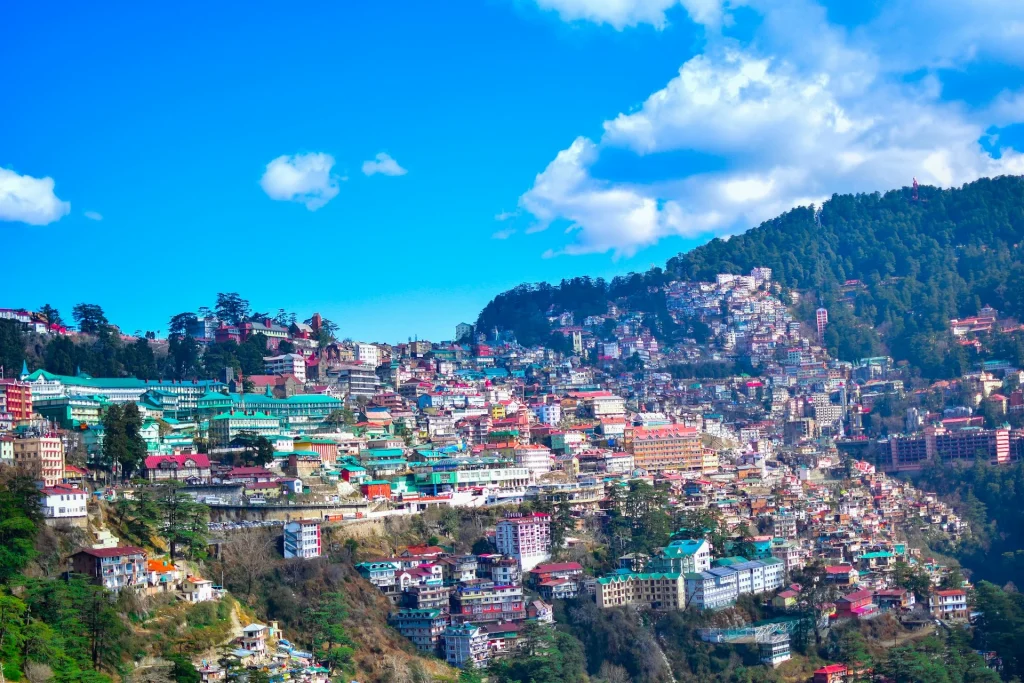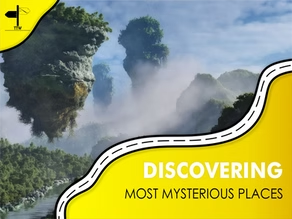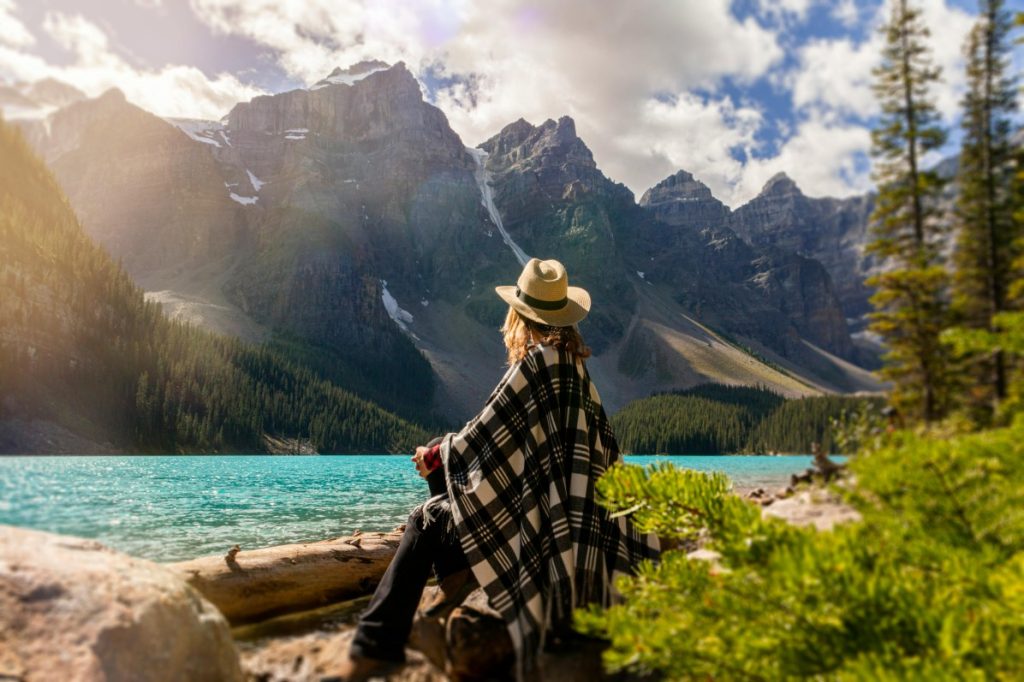9 Indian Ancient Ruins to See to Get Away from Technology

With all the notifications, scrolling, and buzzing of digital life, the need to disconnect has never been stronger. A lot of the time, we dream of going somewhere where we can turn off our phones, clear our heads, and just be in the moment. A beach or a mountain retreat is a great choice, but the ancient ruins of India are a special kind of peaceful place that has been quiet for hundreds of years. These old buildings are full of forgotten stories from the past, showing off the amazing art and engineering of our ancestors. When you visit them, it’s like going back in time to a place without Wi-Fi and deadlines. They want you to walk around, think, and hear the whispers of the past. These peaceful and quiet places are the best places to go to get away from technology. It’s a chance to get away from the noise and reconnect with nature, history, and yourself. “So, get ready to pack your favorite books and a basket for a picnic. These 9 amazing old ruins in India are great places to get away from the modern world.” 1. Raigad Fort in Maharashtra: The Capital of an Empire A picture from a Wikipedia page Raigad Fort was the capital of the great Maratha warrior Chhatrapati Shivaji Maharaj. It is on top of a huge hill in the Sahyadri mountains. This fort, which was thought to be impossible to break into, is a symbol of Maratha pride and is known as the “Gibraltar of the East.” Why It’s Great for a Digital Detox: Walking around the fort is a great way to stay active and present because it is so big. From the top, the views of the valleys and hills all around are amazing and make you feel like you’re on top of the world. The Story Behind the Ruins: Shivaji was crowned king at the fort and spent a lot of time there during his reign. You can see the ruins of his court, public spaces, watchtowers, the main market, and his tomb today. Traveling Toolkit: The best time to go is from September to March. The monsoon season is also pretty, but the trek can be slippery. Things to Do: You can either hike up the 1,737 steps to the top, which takes about 2–3 hours, or take a 4-minute scenic ride on a ropeway. Visit the ruins and take in the beautiful views. Pro Tip: Choose to hike up and take the ropeway down as a pro tip. The hike is worth it, and you’ll have more energy to explore the big fort area at the top before taking a nice ride down. 2. The Martand Sun Temple in Jammu and Kashmir is a wonder of the Himalayas A picture from a Wikipedia page The Martand Sun Temple is one of the most beautiful and underrated ancient ruins in India. It stands proudly against a backdrop of snow-capped Himalayan peaks. King Lalitaditya built this temple in the 8th century to honor Surya, the Sun God. Why It’s Great for a Digital Detox: The temple is in a quiet, open field near Anantnag and gives off a deep sense of peace. The ruins are grand, and the Kashmir valley is beautiful. It’s a great place to think and take pictures. The Story of the Ruins: The temple is a great example of Kashmiri architecture because it combines styles from Gandhara, Gupta, Greece, and Rome. Even though it is in ruins, its beautiful colonnades and detailed carvings still give a sense of how grand it used to be. Traveler’s Toolkit: The best time to go is from April to October, when the weather is nice. Things to Do: Look at the temple’s architecture, have a quiet picnic on the lawns, and take pictures of the ruins with the beautiful mountains in the background. Pro Tip: Get a local guide from Anantnag. A guide can help you understand the temple’s history and the meaning of its unique architectural features. 3. Hampi, Karnataka: The Lost Empire of Boulders A picture from Unsplash- Sandip Hampi was once the beautiful capital of the powerful Vijayanagara Empire. Now, it is a UNESCO World Heritage Site and one of the most beautiful places in India. The remains of grand temples, royal palaces, and busy markets are scattered across a strange landscape of huge, rust-colored boulders and lush green rice fields. Why It’s Great for a Digital Detox: The size of Hampi is so big that it makes you want to walk, bike, and explore for hours. The Tungabhadra River flows peacefully through the otherworldly landscape, which has a calming effect that makes you forget about your phone. The Story Behind the Ruins: Hampi was a rich, busy city from the 14th to the 16th centuries, known for its art and architecture. After it was taken over and left in ruins, its glory came to an end. Today, all that is left is a stunning open-air museum. The Vittala Temple, with its famous stone chariot and musical pillars, shows how skilled people were at the time. Traveler’s Tools: The best time to go is between October and February, when the weather is nice. Rent a bike or scooter to see the huge ruins, take a coracle boat ride on the river, climb Matanga Hill for a beautiful view of the sunset, and listen to the musical pillars at Vittala Temple. Pro Tip: If you want a more relaxed and disconnected vibe, stay in a guesthouse on the “hippie island” side of the river (Anegundi). There isn’t much internet access here, so you’ll have to naturally take a break from technology. 4. Dhanushkodi, Tamil Nadu: The Ghost Town at the End of the World A picture from the Wikipedia website Dhanushkodi is a ghost town that is hauntingly beautiful. It is on the southeastern tip of Pamban Island. In 1964, a terrible cyclone wiped out the whole town, which used to be a busy ferry
Shimla Guide: Discover the Charm of the Hills

Where the Hills Echo: An Introduction, The Past Picture a place where the air smells like pine trees covered in mist, colonial-era buildings stand as proud reminders of a time long gone, and the majestic Himalayas rise up behind it all. This is Shimla, not a dream. This beautiful hill station was once the summer capital of British India. It still draws travellers in with its unique mix of natural beauty and architectural elegance. This place is more than just a vacation spot; it’s a trip back in time. Shimla is the answer for people who want to get away from the noise of the city and into a world of peaceful scenery and interesting history. This guide is meant to be your best friend as you explore every part of the “Queen of Hills.” We’ll show you around its famous sights, take you on secret trails, let you taste its local foods, and give you all the useful advice you need to plan an amazing trip. The Tarzan Way brings immersive storytelling journeys to life, allowing travellers to safely explore Shimla’s historic lanes and beautiful viewpoints, where every corner has a story and every view is a work of art. Are you ready to be charmed? Let’s go to the heart of Shimla and find out why it has always been so appealing. Key Takeaways: A Historic Getaway: Find out why Shimla was the summer capital of British India and see its beautiful colonial buildings, such as the Viceregal Lodge and Christ Church. Famous Places: Find out about the must-see places, such as The Ridge, Mall Road, and the Jakhoo Temple, which has a huge statue of Lord Hanuman. UNESCO World Heritage: Take a ride on the Kalka-Shimla Toy Train, a historic train ride that gives you stunning views of the Himalayas. Beyond the Town: Kufri is great for adventure sports, Chail is great for its peaceful palace, and Mashobra is great for its peaceful nature trails. Practical Planning: Find out when the best time to go is, how to get to Shimla, where to stay, what to eat, and other important travel tips. Be a responsible traveller: Learn how to travel mindfully in the Himalayas so you can protect its beauty and culture with help from groups like The Tarzan Way. 1. A Look into Shimla’s Royal Past Credit: Unsplash Shimla was once a quiet group of villages before it became a busy tourist spot. In the 1820s, British officers looking for a break from the hot Indian summers found its nice weather and changed their fate. In 1864, it was officially named the British Raj’s summer capital. For the next few decades, the whole government would move here from Calcutta (and later Delhi) for six months each year. Because of this yearly migration, Shimla became a centre of power, glamour, and political intrigue. It was given the nickname “Queen of the Hills.” The beautiful buildings, the carefully planned Mall Road, and the overall layout of the town are all lasting gifts from this time period. Advice for Travellers You can see rare photos and objects from the British Raj at the Shimla Heritage Museum. Hire a local guide to take you on a heritage walk so you can hear interesting stories and anecdotes that aren’t in guidebooks. Read Rudyard Kipling’s “Kim,” which has Shimla in it a lot, to get a sense of what the town was like at that time. Quick Facts Shyamala Devi, the goddess Shyamala, was the name before. Height: About 2,276 metres (7,467 feet). Importance in history: From 1864 to 1947, it was the summer capital of British India. 2. The Ridge and Mall Road are the heart of Shimla Credit: Unsplash A leisurely walk along The Ridge and Mall Road, Shimla’s two most famous streets, is a must for anyone who goes there. In the middle of town, The Ridge is a big open area with amazing, unobstructed views of the snow-capped Himalayan ranges. It is the centre of all cultural activities and is surrounded by important landmarks. Mall Road, a street without cars, is just below The Ridge. It is lined with colonial-style buildings, busy shops, cute cafes, and restaurants. It’s the main shopping street and social centre of Shimla. It’s a great place to go for a walk, look for souvenirs, or just enjoy the lively atmosphere. Tips for Travellers The Ridge has the best views and photo opportunities at sunrise and sunset. It’s a classic Shimla experience to get soft ice cream from the vendors on Mall Road. Wear shoes that are easy to walk in because the road is only for pedestrians. Why It Draws Tourists: Because it’s the best way to experience a hill station. The mix of beautiful mountain views, old buildings, and lively local life makes for a relaxing and energising atmosphere. 3. Amazing buildings from the British period Credit: Unsplash Shimla is a museum of colonial architecture that is still in use. The neo-Gothic, Tudor, and Victorian styles of the buildings here tell stories of a grand past. Christ Church is the second-oldest church in North India and is on The Ridge. You have to see it because of its beautiful stained-glass windows, tall spire, and peaceful atmosphere. At night, when the church is lit up, it looks especially nice. Viceregal Lodge and Botanical Gardens: This used to be the home of the British Viceroy of India. Now it is home to the Indian Institute of Advanced Study. Scottish Baronial architecture is amazing. Take a guided tour of the inside to see the teak-panelled walls and learn about the important decisions that were made there, like the ones that led to the partition of India. Gaiety Theatre: A Victorian theatre on Mall Road that has been beautifully restored. It used to host famous people like Rudyard Kipling. It still hosts a variety of cultural events and plays. Advice for Travellers Because the times for the Viceregal Lodge tour are set, you should check
10 Mysterious Places That Still Baffle Us: The World’s Greatest Enigmas

There are amazing things about our planet, but there are also secrets hidden beneath its famous landmarks and busy cities that make us question what we know about the world. The Bermuda Triangle and the Pyramids of Giza are two places that make us think and question what we think we know. But these well-known puzzles are only the beginning. There are alien-like landscapes, haunted forests, and ancient buildings that look like they belong to another world, hidden in faraway parts of the world. These are the places that make us want to go on an adventure. They are the places that scientists have a hard time explaining and that storytellers have turned into legends for hundreds of years. A trip to one of these places is more than just a vacation; it’s an adventure into the heart of a mystery, a chance to feel the thrill of the unknown and connect with the deeper, stranger side of our world. “We have put together the ultimate list of the most mysterious places on Earth after looking into the world’s most difficult puzzles. Get ready for a trip that will change how you see things and give you stories to tell for the rest of your life.” 1. The Dragon’s Blood Trees of Socotra Island, Yemen: An Earthly Sci-Fi Planet Credit: pexels.com Think about what it would be like to land on a planet from a sci-fi movie. That’s how it feels to be on Socotra Island. This island in the Indian Ocean is so far away that a third of its plants can only be found there. The Dragon’s Blood Tree is the most famous and strange of these. The Mystery: These weird trees that look like umbrellas are from another world. Their thick, upturned canopy looks like a flying saucer on top of a trunk. Crimson Red Sap: The tree gets its name from the dark red resin that comes from it. This sap, which looks like blood, has been used for hundreds of years in medicine, dye, and incense. Unique Ecosystem: How did this strange and one-of-a-kind ecosystem come to be in total isolation? Scientists still don’t agree on where the island came from, but they do agree that it is a living laboratory of evolution. Scientists think that Socotra’s unique plants are the result of its long geological separation from mainland Africa, along with extreme heat and drought that made the plants adapt in strange ways. The tree’s odd shape helps it stay alive in dry places by lowering evaporation and giving its roots shade. Traveler’s Pro Tip: It’s hard to travel to Yemen right now because of political instability, but you can still see the island’s magic in documentaries like “Socotra: The Hidden Land.” If you do want to go, you should only do it through a reputable and specialized tour agency that knows how safe it is there. 2. Lake Natron in Tanzania: The Lake That Turns Animals to Stone Credit: Nickbrandphotography There is a lake in northern Tanzania that is so dangerous that it looks like it belongs on Mars. Lake Natron is a salt lake with a dark secret: any animal that dies in its waters is preserved in a creepy, statue-like state. The Secret: Petrified Creatures: When birds and other animals die and fall into the lake, they become calcified, which means that the chemicals in the lake turn them into stone-like statues. Their bodies are perfectly preserved, even the last feather. Blood-Red Water: The lake’s harsh conditions are perfect for salt-loving microorganisms, which can make the water look red or pink. A Deadly Trap: Why do so many animals die here? The lake’s surface can confuse birds, making them crash into the water, where the deadly chemicals start to work. The Theories & Explanations: The “petrifying” effect is not magic; it is chemistry. The lake has a very high pH level, which is similar to ammonia. It also has a lot of sodium carbonate and other minerals that come from nearby volcanoes. This mix of chemicals is a great preservative that mummifies the bodies of animals that die there. Tip for travelers: You can’t swim in Lake Natron, and getting too close can be dangerous. The best way to see it is to go on a guided safari from Arusha, which is close by. It’s interesting that the lake is one of the most important places in the world for Lesser Flamingos to breed. They have learned to live in its harsh conditions. 3. The Forbidden Continent: The Mysteries of Antarctica Credit: pexels.com Antarctica is the most isolated and uncharted continent on Earth, a realm of ice and enigmas. Because of its harsh conditions and political agreements, most of it is off-limits to regular people. The Mystery: The “Pyramids”: Satellite pictures have shown that there are several mountains that look like pyramids sticking out of the ice. Some people think that these are man-made structures built by an ancient civilization, while others think that UFOs were involved. The Antarctic Treaty is an international agreement that forbids any military activity and carefully controls who can go there and what they can do. This has led to conspiracy theories that governments are hiding something there. What Lies Beneath the Ice: The ice sheet in Antarctica is as thick as 3 miles. No one knows for sure what ancient secrets are hidden underneath, like lost civilizations or unknown life forms. Theories & Explanations: Scientists say that the pyramids are “nunataks,” which are rocky mountain peaks that have been worn down by wind and ice over millions of years into a shape that looks like a pyramid. The Antarctic Treaty is there to keep the continent’s delicate environment safe for scientists to study. Travel Tip: You can’t go inside the “forbidden” area, but you can take a cruise to the Antarctic Peninsula. Even though these trips cost a lot of money, they give you a chance to see the continent’s amazing animals and stunning
Instagram-Worthy Travel in India (2025): Most Photogenic Spots + Guide

Traveling is now more than just crossing places off your list; it’s also about catching moments to post on Instagram. With India’s abundance of breathtaking scenery, you’ll need to have a picture-perfect travel planner’s mindset to capture every moment, from street-vibe motion to sunrise reflections. No matter if you’re a solo traveler or first time visitor, this guide will help you discover all the popular photogenic destinations of India, along with the best tips and advice regarding when to visit, ideal time, and festivals to attend for best travel photography. 1. Golden Hour Landscapes: Desert, Mountains & Water India offers breathtaking scenery that is worth a double-tap and these locations are one of such most popular spots on travel photography lists. Unique Highlights: For dramatic, minimalist frames, desert dunes provide silhouettes, Himalayan valleys provide layered mountain backdrops, airy skies and lakes create symmetry that works for both photos and reels. Best Destination to Experience: Visit places like Jaisalmer, Pangong Lake, Spiti Valley, Nubra Valley, Rann of Kutch. Pro Tip: Golden hour is the best time for photography. Use the panorama mode. Keep a wide-angle lens. 2. Vibrant Cities & Colourful Streets The pastel-shuttered lanes of Pondicherry, the vibrant pinks of Jaipur, and the chaotic charm of Delhi’s Chandni Chowk are all excellent photogenic locations for narrative photographs. Unique Highlights: Context is added by architectural backgrounds. Street scenes are ideal. Color-coding lanes or houses (think pink, mustard, or turquoise) are best for engaging grids. Best Destination to Experience: Visit places like Jaipur, Pondicherry, Delhi (Chandni Chowk), Varanasi (Ghats & Alleys), Jodhpur (Blue City). Pro Tip: For soft architectural light, visit shortly after sunrise, to see double-colored, reflective wet pavements visit after rain. 3. Heritage + Culture Scenes Heritage sites provide layers of meaning in every frame, which is ideal for a travel planner who wants both beauty and story. Unique Highlights: Ruins, architecture, and carvings provide interesting shadows and natural frames. Better lighting and fewer crowds can be found when visiting in the early morning. Best Destination to Experience: Visit places like Hampi, Khajuraho, Agra (Taj Mahal & Fort), Udaipur (City Palace), Ajanta & Ellora Caves. Pro Tip: Look into photography permissions beforehand. Video and tripods are prohibited in some places. 4. Beaches, Backwaters & Island Dream Scenes If you want to travel with a “relax-and-shoot” mentality, India’s beaches and serene waterways provide both peace and visual appeal. Unique Highlights: Open horizon lines, gentle waves, and water reflections combine to create serene images. Excellent background is available for lifestyle photos. Around coastal towns like Fontainhas and Goa, pastel-colored streets add diversity. Best Destination to Experience: Visit places like Radhanagar Beach (Havelock Island), Kerala Backwaters (Alleppey), Goa, Varkala, Gokarna. Pro Tip: If you plan to take pictures near water, bring a waterproof phone pouch. 5. Festivals, Local Food & Authentic Moments Pictures of people, events, and regional cuisine bring life to our feed. Whether it’s a Rajasthani festival or Delhi street food, these occasions foster genuine engagement in Instagram. Unique Highlights: Local customs, fairs, and festivals like Diwali offer dynamic, vibrant, and emotionally charged scenes. Local food, such as regional specialties and street vendors, gives your grid and story more flavor. Authentic interactions provide distinctive highlights. Best Destination to Experience: Visit places like Jaipur (Holi & Teej Festival), Delhi (Street Food & Fairs), Varanasi (Ganga Aarti), Pushkar (Camel Fair), Kolkata (Durga Puja). Pro Tip: Get the consent before taking close-ups. To separate emotion, use a prime lens or a zoom to a moderate extent. Travel Planner Checklist & Packing for the Photo Hunt Unique Highlights: Always have an extra SD card or memory and a portable charger with you. Carry a waterproof bag or pouch, a spare lens cloth or lens cleaner, and a light jacket or scarf for early morning shoots (particularly on the coast or in the hills). Pro Tip: Each day, create a loose “photo itinerary” by planning one or two important shots (local market, golden hour), allowing extra time for impromptu moments. Best Time for Photography Shoot in India When planning a trip to India, timing is crucial. The light and mood you want your pictures to capture will determine the ideal time for a photography shoot. Winter (October to February) It’s perfect for outdoor shoots because of the clear skies, bright sunshine, and comfortable weather. Best Destinations: Spots like Jaipur, Delhi, Agra, Varanasi, Rann of Kutch, and Goa. Highlight: The gentle, diffused light from the low sun angle is ideal for architecture and portraiture. Summer (March to June) Summer brings vibrant colors and fewer crowds, despite the heat. This season brings out the beauty of the Himalayan landscapes and hill stations. Best Destinations: Ladakh, Spiti Valley, Darjeeling, Sikkim, and Ooty. Highlight: Glacial lakes and snow-capped mountains shine bright during early morning. Monsoon (July to September) Monsoon shots are the best for drama and mood. Anticipate a lot of greenery, mist, and reflections. Best Destinations: Spots like Kerala backwaters, Coorg, Munnar, Meghalaya. Highlight: Soft, cloudy skies soften harsh shadows. It is perfect for narrative shots. Pro Tip: Schedule your activities around sunrise and sunset. The blue hour intensifies contrast and mood, while the golden hour adds warmth. Festival Frames: Capture India in Celebration Holi: Festival of Colours (March) Powder clouds of pink, yellow, and green create impromptu and vibrant frames. Where: Mathura, Vrindavan, Barsana, and Jaipur. Unique Highlight: Early morning temple processions and laughter-filled crowd scenes. Pro Tip: Use a fast shutter speed. Protect your phone or camera with a waterproof case. Diwali: Festival of Lights (October–November) With the use of fireworks, golden lamps, and festive clothing, everything seems to be glittery. Cities are transformed into glittering canvases. Where: Places like Varanasi, Jaipur, and Delhi. Unique Highlight: Take pictures of diyas by rivers or houses that are lit up at night. Pro Tip: To prevent blur in low light, use the night mode or manually adjust the ISO. Pushkar Camel Fair (November) Travellers who enjoy earthy, rustic frames, this desert fair is must-go to spot. Where: Places



